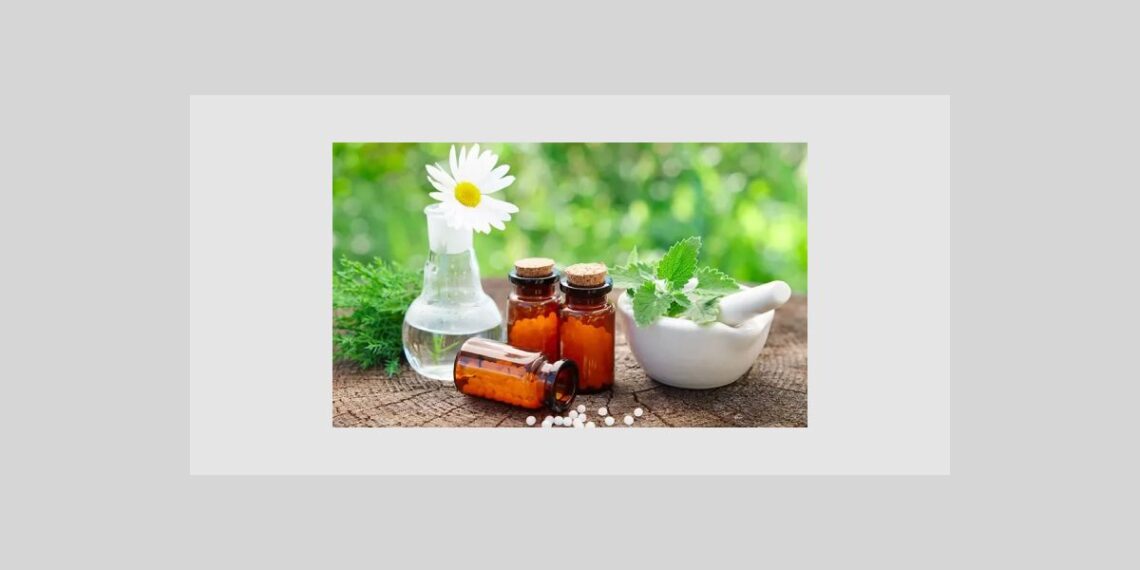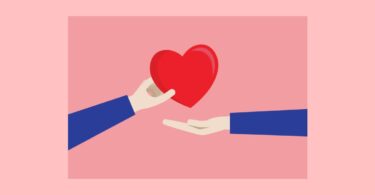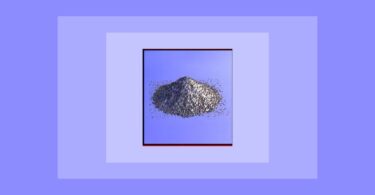To my way of thinking, the most important principle of homeopathic medicine is not Hahnemann’s controversial Law of Similars, which gives homeopathy its name, or our frequent reliance on “infinitesimal” doses diluted beyond the point of discoverable molecular structure, which many people naturally find counterintuitive and difficult to understand.
Underlying and helping to explain them both is a third principle, a truism so obvious that most doctors see no practical use for it, if indeed it enters their thinking at all. Hahnemann called it the “vital force,” by which he meant the life principle itself, the capacity of living organisms to function as integrated energy systems, with their component cells, organs, and tissues working in concert, that is, everything that sets them apart from the inanimate world.
The vital force in its clinical aspect, the ensemble of signs and symptoms that patients manifest at any given time, which homeopaths call the “totality of symptoms,” provides the indispensable basis both for choosing the appropriate medicine for each individual, and for tracking how their clinical picture improves, worsens, and changes over time in response to it.
In contrast, allopathic physicians who ignore or overlook it have no working concept of the patient as a whole, and must judge improvement and worsening solely in terms of their “diseases” and “abnormalities,” abstractions from that wholeness that are usefully measurable, but often correspond poorly to what patients actually feel and experience.
The vital force and the totality of symptoms thus provide both the starting and end points of the homeopathic project, as well as everything in between, with the Law of Similars, the rule of giving a single medicine for the whole patient, and the common practice of using ultradilute doses all making perfect sense in light of it.
The Law of Similars
Strictly speaking, the Law of Similars isn’t quite a law, but rather an empirical generalization, based on a fortuitous coincidence in Hahnemann’s life. As well as a practicing physician and expert chemist, he was also known for translating foreign medical works into German, and was working on a monograph by William Cullen, a Scottish physician who ascribed the fever-fighting properties of Cinchona, or Peruvian bark, now known as the source of quinine, to its bitter taste.
Seeming as absurd to Hahnemann as it does to us today, that claim impelled him for some unknown reason to take a dose of the bark himself, and he promptly experienced a paroxysm of fever and chills uncannily like those it was famous for curing, a duality so striking and unexpected that he let it wear off, and then took a second dose, with exactly the same result.
This unlooked-for correspondence was life-changing for him. Immediately grasping its profound significance, he methodically set about administering therapeutic doses of the leading medicines of his time to himself and his family, friends, and colleagues, and compiling detailed written “provings” of all their symptoms, as well as the objective signs seen to accompany them, amounting to more than ninety different substances in the course of his lifetime, a truly monumental achievement.
He called it the Law of Similars, but his discovery applied solely to the medicines that he himself had investigated and then used successfully on the basis of it, just as the hundreds more proved by his successors and our own must still fall short of rigorous proof that would be logically binding on all the medicines that there are or possibly could be.
So he didn’t write it as a declaration in the Indicative, Similia similibus curantur, “Likes are cured by likes,” but rather an exhortation in the Subjunctive, Similia similibus curentur, “Let likes be cured by likes.”
That is why it makes the most sense to think of it as an invitation to physicians and healers of every kind to take advantage of the regular correspondence that he discovered, that all medicines so far investigated appear to have the power to relieve or cure the same array of symptoms that they can provoke or elicit in healthy volunteers.
This same duality is in fact widely familiar even in allopathic circles, where “paradoxical” effects such as antihypertensives raising blood pressure, antidepressants making depression worse to the point of suicide, and the like, are commonplace and well-documented in standard reference texts like the Physicians’ Desk Reference, just not proclaimed, understood, or made use of as a general rule.
In short, like other empirical generalizations, it’s simply a brilliant idea, well substantiated in practice, but not yet amenable to conclusive proof or disproof, as scientific hypotheses must be, much less intuitively obvious, even to professional homeopaths who use it every day. For the moment, I’m entirely content to think of it as a splendid mystery, envisioning a bioenergetic science that is still in its infancy.
In any case, it has eminently practical consequences, like coffee, for instance, whose well-known ability to keep us awake and alert makes it highly prized by homeopaths everywhere for its power to relieve insomnia from excessive thoughts, ideas, and mental overstimulation.
Or the venoms of the rattlesnake family, which kill by denaturing the blood, causing thrombosis and/or hemorrhaging, and are thus widely used in homeopathic medicine for healing that same range of emergencies. So we can make good use of this duality in all medicines, even though we don’t yet understand how it can possibly be true.
The single remedy.
The totality of symptoms also explains why homeopaths choose just one medicine at a time for the whole patient, another core principle of the classical or Hahnemannian method. Just as the patient before us is a unified bioenergetic system, characterized at every moment by an ensemble of manifest signs and symptoms, each homeopathic medicine represents the totality of its manifestations in both the volunteers who proved it and the patients who are to be cured with its help.
So the task of our case-taking is simply to find the closest possible match between their total symptom-pictures. In this way the single remedy evokes the sublime beauty of the method, and the secret of its capacity for healing that is both deep and long-lasting.
The minimum dose.
Like the Law of Similars, our use of and reliance upon those notorious “infinitesimal” doses was the result of yet another empirical discovery. When Hahnemann began prescribing medicines homeopathically, he confirmed that the usual material doses often brought relief eventually, but only after the symptoms worsened, while diluting them lessened these ill-effects, but also the improvement, just as one would expect.
Again purely by chance, he found that vigorously shaking or “succussing” the medicines with each dilution not only lessened these aggravations, but also actually enhanced the therapeutic effect, until by the end of his life he was having excellent success with medicines diluted 1:100 up to 30 times, a level already well beyond the threshold of Avogadro’s number.
After more than two hundred years, nobody has ever satisfactorily explained how a solution with no detectable molecules of the medicine remaining in it could possibly have any effect on a patient, let alone a curative one, so that even now, with various forms of alternative and complementary medicine entering the mainstream, most American physicians still find homeopathy impossible to take seriously, let alone believe in.
I confess that even I feel a bit of a letdown when new patients trying it for the first time aren’t in the least skeptical of the idea or hesitant to try it out, seemingly untroubled by these profound mysteries at the very heart of it.
Does it work? Fortunately, it does, and neither the failure of contemporary science to explain it nor its surpassing disinterest in even trying to, comes close to proving that the homeopathic phenomenon isn’t real, or that the method of treatment based on it is ineffective.
Ever since Hahnemann’s time, all criticisms of homeopathy, both well-intentioned and otherwise, boil down to the same defective syllogism, that it can’t possibly work; so therefore, it doesn’t work! In fact, an abundance of reputable scientific evidence now proves quite convincingly, if not yet by logic, that our notorious infinitesimal doses are indeed capable of important biological activity, such as both stimulating and inhibiting:
1) colony growth in bacterial cultures;
2) in vitro enzymatic activity in tissue culture and cell-free extracts;
3) seed germination and growth in various plant species; and
4) various physiological functions of higher animals.
Even in peer-reviewed journals of clinical medicine, well-designed Randomized Control Trials, or RCT’s, have repeatedly shown infinitesimal doses to have relieved the sufferings, eased the disabilities, corrected the abnormalities, and even healed the tissue damage of patients with a variety of major diseases.
Perhaps most convincingly of all, dedicated physicians have continued to practice medicine on the basis of Hahnemann’s principles for more than two hundred years, and now do so on every continent and in most countries of the world.
The simple fact that the philosophy and method have survived intact for so long and attracted qualified doctors from almost everywhere at a time when allopathic medicine has become the dominant model of health care in the world represents a major historical achievement in its own right, and argues persuasively for the authenticity of the homeopathic phenomenon and all that follows from it, the validity of the Law of Similars, the efficacy of our infinitesimal doses, and a whole lot more.
Whatever mode of treatment we use, all physicians must live by the bottom-line reality that our critics tend to lose sight of, that our reputations and livelihoods depend on the extent to which our patients are benefited by our efforts on their behalf.
As to whether homeopathy works, my best answer is that it worked well enough, even in my own far from expert hands, to sustain me in the practice of family medicine for 46 years, with never a cause for regret; and I can say with some assurance that the vast majority of my colleagues both here and abroad would say the same.
So when our critics insist that our medicines are mere placebos, I’m of course deeply flattered by the logical implication that we must be healing our patients by casting some sort of shamanic spell over them unawares. But my experience has also taught me that the medicines work equally well in unconscious and comatose patients, for whom the influence of suggestion is negligible, and that the “placebo effect,” that starved and tattered remnant of the innate self-healing capacity, is an essential component of all healing, even with pharmaceuticals, just by no means the whole of it.
Far from believing that pharmaceutical drugs have no value, I often referred patients I couldn’t help to my allopathic brethren, and was more than grateful for their help. I began practicing homeopathy because I wanted to try a gentler and safer approach first, whenever possible.
My experience soon added an even more compelling reason, that matching the treatment to the individuality of the patient allows and encourages a deeper and more comprehensive level of healing than is possible with drugs that merely counteract a specific symptom or correct a particular abnormality by applying superior chemical force at that strategic point.
Although this kind of talk will probably cause more than a few to roll their eyes in utter disbelief, as some hippie fantasy or mere wishful thinking that’s too good to be true, every practitioner keeps a trove of stories to answer them. One of my favorites is that of a 34-year-old R.N., plagued with severe endometriosis since her teens, who had already undergone four surgeries to remove large, blood-filled cysts from her bladder and pelvic organs, as well as several courses of male hormones to suppress the condition.
She consulted me solely to restore the integrity of her menstrual cycle, having long since been counseled by a number of specialists to abandon any thoughts of childbearing. Intensely painful in the past, her periods had become progressively more irregular, infrequent, dark-brown, and “dead,” as she described them, from so many years of aggressive treatment.
After trying a few homeopathic medicines, her periods did indeed become fuller and richer; and within six months she was pregnant. By the next time I saw her for a different ailment nearly eight years later, she had given birth to two healthy children after uncomplicated pregnancies and normal, vaginal births, and had remained in good health ever since.
Like all the others that any of us could produce, her story is merely an anecdote, utterly without any statistical significance; and its happy outcome cannot be ascribed with any certainty to a homeopathic medicine or indeed any other agency in precise, linear fashion.
But my patient has never stopped thanking me for it, which is reason enough to be grateful for a method and style of healing that is gentle, spontaneous, and catalytic in nature, rather than a technical correction achieved by the application of overriding and irresistible chemical force.






This is such a clear and helpful article! The information is clear and understandable, and the message is inspirational.
It is true that still somany people argue that homoeopathic remedies are only sweetpills and do not work,situations are changing.Somany patients are approching homoeo pathic docters for thier diseases
one of my friend, an exicutive engineer,was growing beard for somany days.I was told thathe was suufering from big warts on his face.he has tried acid and cutting them repeatedly.I told him that I can cure him He laughed at me and told never possible
He also told that he had seviour loose motions ever since he had a diiner out side.He demanded that if i stopped it ,,hec will
take treatment for warts alo.With out telling anything, i gave a cup of water in which i dropped 5 drops of nux v 1m.
after 10 mts he came to me and asked did i gave him any medicine for his looso motions so that it abruptly stopped.
Nex day he came and asked for wart medicine.I gave Thuja 200 pills and a bottle of thuja Q and crab apple mixexed
and crab apple pills to take daily 4 times.surprisingly his warts were vanished and had a cleanlyshaven face with in 15 days
here totality of syptoms were not taker.crab apple changed his mindset.Im all cases totality of symptoms can not be taken.